Robotic Assisted Surgery (RAS) Program UL Hospital
Introduction
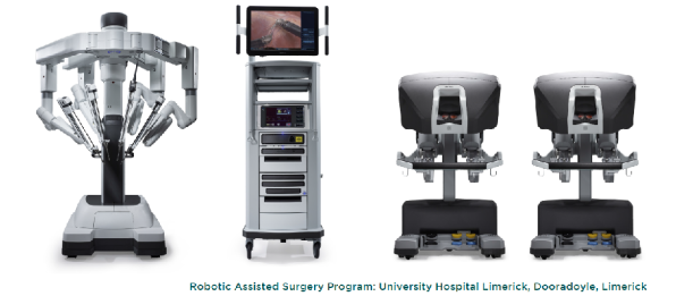
Robotic surgery represents the highest international standard of surgery worldwide. It is the most advanced form of “key hole” or “laparoscopic” surgery. The robot is secured or ‘docked’ to the patient and has 4 working arms, each requiring only an 8mm skin incision, to which operating instruments are attached. Once docked, the robotic arms and instruments are controlled by the surgeon who is positioned at a console nearby. The 3-dimensional view afforded the surgeon is unprecedented in surgery to date and superior to traditional 2-dimensional projections. The level of control, accuracy and versatility the console controlled instruments provide is unsurpassed and not achievable with other approaches.
Until recently patients wishing to avail of this type of surgery had to travel to private-only health institutes in Ireland, or indeed travel abroad. On May 9th 2016, the state-of-the-art Da Vinci Xi dual console robotic surgical platform was installed in Operating Theatre 7 at University Hospital Limerick (UHL), the first such installation in Ireland. The Da Vinci Xi program was funded by the Mid-Western Hospitals Development Trust and the University of Limerick. The dual console allows two surgeons to operate simultaneously ensuring optimal decision making for each individual patient and thus, the expertise is doubled. It also allows for dedicated robotic training for the surgeons of tomorrow, again a surgical first in Ireland. The University of Limerick Hospitals Group can now offer a unique and nationally unparalleled surgical option to all patients in the Mid-Western region. Professor Calvin Coffey has pioneered robotic assisted colorectal surgery in Ireland and Mr Subhasis Giri has pioneered robotic assisted renal surgery in Ireland.
Background
Surgical approaches and techniques have changed dramatically over the last 25 years. Traditionally, patients with kidney or colorectal cancer would have a large open incision (20cm or more) in order to remove the affected organ. However, laparoscopic (keyhole) surgery revolutionised surgical practice. Laparoscopy results in less postoperative pain, reduced length of hospital stay, reduced analgesic requirements, improved cosmesis and an equivalent cancer outcome. More recently, robotic surgery has further enhanced all of these outcomes by allowing a level of technical precision that is simply not possible at traditional open or laparoscopic surgery.
Robotic surgery is regarded as the future of surgery due to the capabilities of the state-of-the-art platform. It is readily available to the majority of patients in other European healthcare systems. Robotic surgery until now has been of limited availability in the public (gynaecology) and private (prostate cancer) sectors in Ireland. Thus, the need to provide a service to all patients was paramount, coupled with the introduction and pioneering of both robotic colorectal and renal surgery in Ireland.
Research 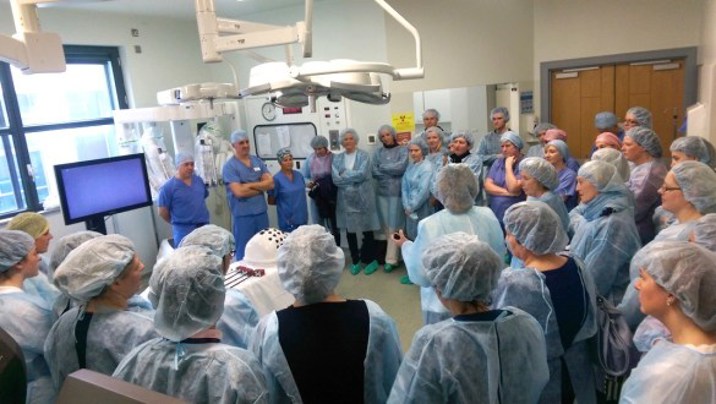
The robotic team performed extensive research, planning and training prior to the introduction of the program. Surgeons have travelled to the United States and Australia to complete robotic training fellowships. However, this is only the tip of the iceberg and the robotic team covers a number of specialities – Strategic planning and Project Management, Nursing, Anaesthesia, Sterile Services, Cancer Co-ordinator, Attendants and Portering. All of these disciplines have undergone specific, highly focused training to ensure that the program runs smoothly and all invested parties are suitably qualified and the colorectal surgeons have EARCS accreditation.
In terms of clinical research, the initial research from this program has been the prospective collection of data from all operations performed. The potential for research is immense with a number of projects already underway.
From the outset the team have set up a Minimally Invasive Surgery (MIS) Forum to provide evidence of regulatory compliance. This is a multidisciplinary team meeting of aprox. 15 professionals – alternate meetings are dedicated to morbidity and mortality meetings. All meetings are minuted and actions have to complete within two weeks.
Effect on the organisation
Following major surgery for kidney or colorectal cancer, recovery in three to four days was the exception rather than the rule. With robotic surgery this has reversed, and now this shortened recovery is becoming the rule rather than the exception. Patients lose a minimal amount of blood during surgery, require less pain medication in the postoperative period, are mobilising on the first postoperative day and are having a markedly reduced length of inpatient hospital stay. Data to date demonstrates that post-operative recovery is halved when compared with standard keyhole surgery, with an average postoperative hospital stay of approximately 4 days.
The above outcomes allow an enhanced patient flow through the hospital and thus, not only do the individual patients who undergo robotic surgery benefit, but other patients attending the hospital benefit due to improved patient flow and freeing up of occupied bed days. On average, 3 robotic operations take place each week in the hospital. Through reduced hospital stay and other savings (e.g. instrumentation), the program is running cost neutral.
At an institutional level, the positivity within the organisation has been overwhelming. The commitment, hard work and dedication of the entire team is what has made this initiative succeed. At a community level, this program has received a lot of local, national and even international recognition and acclaim. It affords the region and its patients an opportunity that Ireland has not had before – a robotic surgical service for the public patient. The program has been formally introduced with great success to local and national media and the benefits, improved outcomes, cost effectiveness and huge educational and training opportunities discussed.
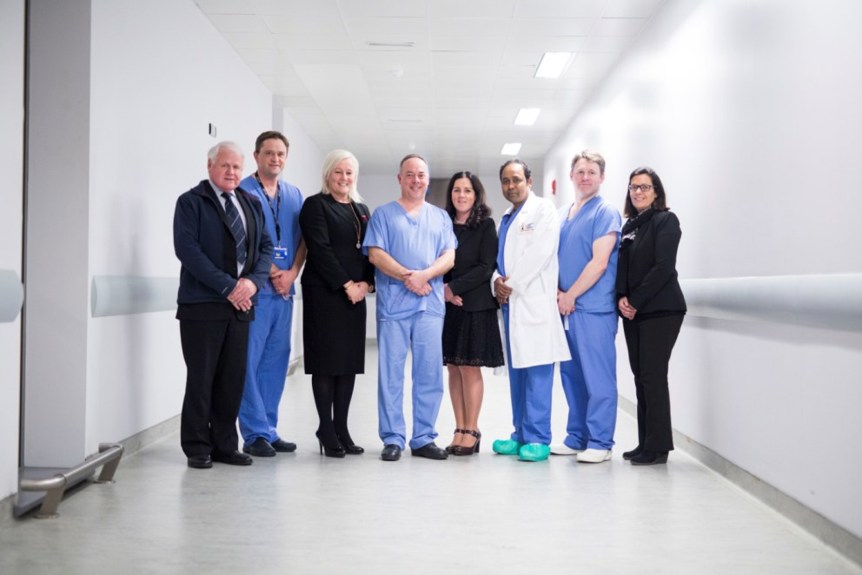
The first Renal Robotic Assisted Surgery Patient returns to says “Thank You” to UL Hospital
(L to R) Mr Michael Hanrahan (First Renal Patient to undergo Robotic Assisted Surgery), Dr James O’ Driscoll Consultant Anaesthetist, Ms Colette Cowan CEO ULHG, Professor Calvin Coffey Consultant Colorectal Surgeon, Ms Suzanne Dunne Head of Strategy ULHG (and Project Manager for the Robotic Assisted Surgery Program), Mr Subhasis Giri, Consultant Urologist, Mr Dara Walsh Audio-visual Co-ordinator, Ms Kara Leddin Administrator.
Plans going forward
The dual console, the only one in Ireland, allows for dedicated training for the surgeons of tomorrow. One surgeon sits at each of the consoles which are positioned side-by-side and the control of the surgical instruments can be swapped from one console to the other i.e. between both surgeons. This is akin to the pilot and co-pilot of an airplane and represents an unequalled avenue of surgical training. UHL also has the ability to broadcast live surgery within the hospital to its junior doctors and will be able to broadcast live to the University of Limerick in the coming months. This provides an unrivalled educational program for medical staff, nursing staff and students alike. Thus, the potential for training and educational courses is immense and the first robotic training day will take place during the annual Sylvester O’ Halloran Surgical Meeting in early March 2017. Two Robotic Information days were already held in September and October this year.
At present, the program has focussed on the colorectal and urological fields. There are currently gynaecological, endocrine and pelvic floor surgeons undertaking specific, structured, intense robotic training and these specialities will lead to further utilisation of the robot, expansion of the program and ultimately and most importantly, further opportunities for patients to benefit from the cutting edge of surgical technology.
For further information on the Robotic Assisted Surgery Program please contact Suzanne Dunne, Head of Strategy UL Hospital’s Group at suzanne.dunne@hse.ie
UHL Robotic Assisted Surgery Program from UL Gems Surgery on Vimeo.
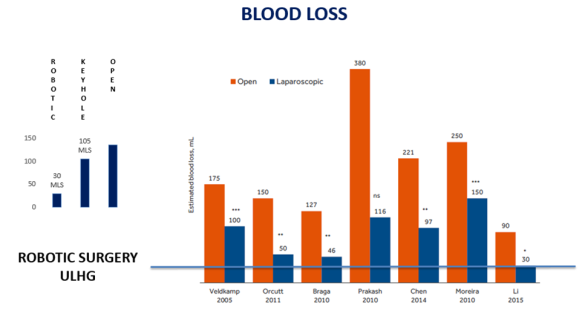
Figure 1. Comparison of intra-operative blood loss during robotic surgery at the University of Limerick Hospitals Group with a number of international series of laparoscopic and open surgery.
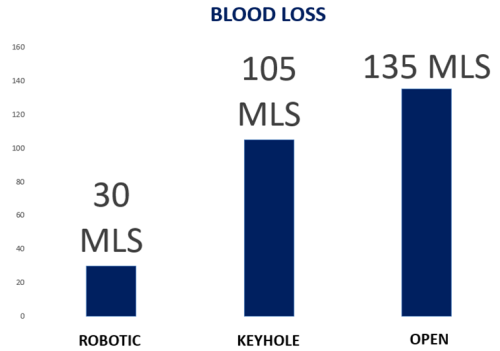
Figure 2. Actual blood loss in millilitres from Figure 1
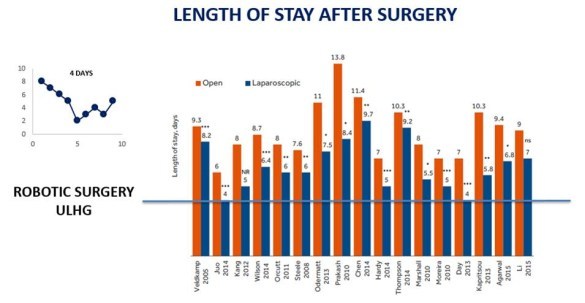
Figure 3. Comparison of average length of stay of patients postoperatively in the University of Limerick Hospitals Group compared to a number of international studies of open and laparoscopic surgery.
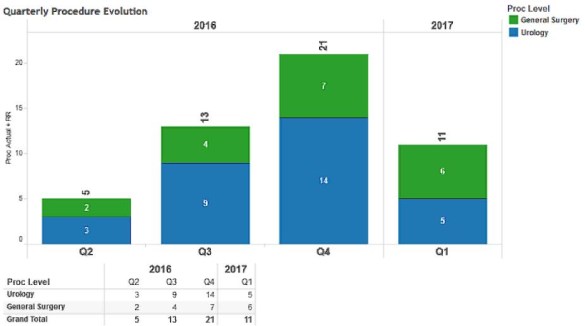
Figure 4. Cases per quarter
- Ambulance Arrivals Project A Case Study
- SNOMED National Release Centre (NRC)
- SVUH Award winning Patient Flow Whiteboard
- Scan for Surgery
- Hospital-based care
- Digital Natives Sign App
- Digitisation of risk assesment tools for Adult mental health services in north Dublin
- Patient Engagement Operating Systems - Hep C
- Digital Transition for HSCPs at St. James's Hospital
- Primary Care Centre Castlebar Case Study
- Mario - Managing active and healthy ageing using caring service robots
- Claimsure - Health Insurance Claims Management System
- Cyber Attack Response
- Data systems in SVUH Emergency Department
- Electronic Discharge Prescription Pilot
- Epilepsy EPR
- eReferral
- eReferral Radiology Pilot
- eRostering
- Electronic Blood Tracking
- GP Practice Management Systems
- Healthmail
- Heart Failure Virtual Clinic
- Infrastructure - MPUP to ECAM
- IT Security - Small changes, big difference
- Kidney Disease Clinical Patient Management System
- Local Asset Mapping Project at St James' Hospital
- LUCY
- Mi Kidney App
- Model Community
- NCHD - Employment Record Portal
- Nursing & Midwifery Quality Care Metrics
- Ophthalmology Electronic Patient Record
- PharmaBuddy
- Radiology & Electronic Patient Record
- National Smart-Pump Drug Library of Paediatric and Neonatal Standardised Concentration Infusions
- Quality & Patient Safety
- Robotic Assisted Surgery Programme
- Shared Learning on EHR
- St. James' Hospital - National Haemophilia System
- Tallaght Hospital Pharmacy
- Tallaght Hospital Patient Engagement App
- Track & Trace
- Using IT to Improve Ireland's Public Sector Healthcare
- National Audiology Clinical Management System (NA-CMS)
- St Vincent's University Hospital Award Winning Whiteboard Patient Flow System
- Snomed Case Study
- Telehealth Project Donegal
- St Vincent's Whiteboard Patient Journey System a Case Study
- Ambulance Arrivals Project
